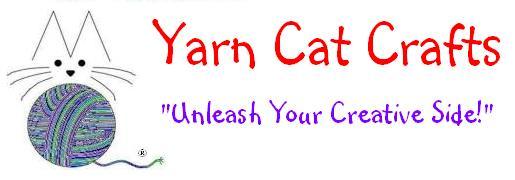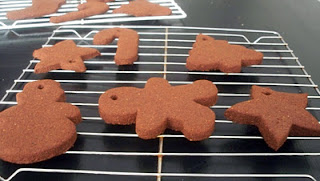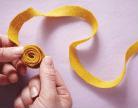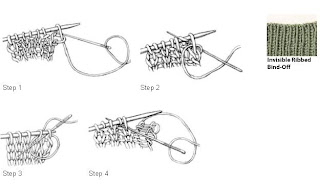Learn Peyote Stitch The Simple Way
Originally Posted on Wednesday, February 15, 2012
7:28 PM
AND
Simple Peyote Bracelet Project
Originally Posted on Wednesday, February 15, 2012 7:56 PM
Simply Beads Newsletter
February 8, 2012 – Voll 6, No. 2
Peyote Stitch
The evidence of
ancient man stitching beads together for decorations have been found in many
places around the globe. The peyote stitch, in particular, has been found in
ancient Egyptian artifacts as well as Native American. Peyote is a simple
stitch that involves using beading needles and specialized threads to weave
beads into a specific grid pattern. To learn peyote, I suggest you start with
pony beads and a thin shoestring or cord. (If using cord, you may also want a
needle with a large eye.) Also, you'll always want to stitch on a beading
mat.
First, string one
bead. Now, thread the string back through the bead in the same direction as
before. Pull the bead so that you have a tail of a few inches remaining. This
will be your stopper bead. You will use this to keep your beads on your
stringing material while you start your project. You can remove it after you've
done a few rows but most beaders forget about it until the project is
finished or it gets in the way of finishing it.
NOTE: You will not use this
bead in any of the stitch counts.
Next, string 10 beads of one
color. Pull them to the end so that they are close to the stopper
bead. Thread one bead of another color. (This will make the pattern
easier to see.) Thread the end of the cord through the second bead from the
end of the original ten beads. Pull the string so that the new bead is
sitting on top of the first bead of the original ten row. String another
bead, of the same color as the last, and thread your string through the
fourth bead from the end of the original ten row. Straighten your string and
beads so that the new beads are sitting on the original beads.
Right now, your project
won't look perfect but it will straighten out as we continue to stitch.
Continue this last step until you reach the end of the row, skipping the bead
that the new bead will sit on and threading through the next bead. Once you
complete each row, move up to the next and change directions. As you can see,
I have stitched two rows of each color except the original blue row turned
into two rows when I added the second green row. Practice with your pony
beads for a few more rows until you feel like you've got the hang of
it.
When you go to make an
actual project, you will want to use specialized beading thread and usually
beads that are very uniform in shape and size. While you can use regular
Czech seed beads for stitching, Japanese seed beads are more uniform. For
nearly perfect seed beads, you'll use delicas. These are a cylindrical-shaped
seed bead that fit right next to each other for a tight weave. Here are
examples of different beads in the peyote stitch. Whichever thread you
choose, you'll want to cut a pretty long length.
For beginners, I usually
have them start with about three feet of thread. If you think you are going
to run out, it's better to stop and change threads than risk it. You'll need
a good length of thread to run back through your stitching to secure
it.
Adding/Changing
Thread
Simply take the needle
of the original thread, cut a new piece of thread, making sure you'll have
enough to work for a long time or finish the project with and thread it on to
the needle. You can leave the original thread hang while you finish your
project. Weave the new thread through your last couple of rows and leave a
tail to weave in later. Once you reach where you left off, make sure your
thread is heading the same direction and continue with your pattern.
Ending your Project
There are a myriad of
ways to add a clasp to your project. My favorite is to sew a shank button to
the top of one end and add a loop to the opposite end. Here's how: When
you've reached the end of your project, make sure it fits. The ends should be
close to each other. Weave the thread back through the last few rows and stop
in the center of the row that you want add your button to. Come up from the
center bead, run your thread through the shank of the button and back through
the center bead in the same direction that you originally went. Repeat this a
few times. The more you go through it the stronger the hold, but too many
will break the bead. Continue stitching back through a few rows and trim thread.
You can place a knot in between beads but it can make the weave look odd and
it's not necessary. Back on the starting end, string enough beads to fit
around the button. You'll want your loop to be snug but not a struggle to get
over the button. Run your needle through the first bead on the opposite side
and down through a few rows. Knot, if desired, then trim. And you're done!
Free Article from: Simply Beads Newsletter
February 8, 2012 – Voll 6, No. 2
------------------------------------------------------------------------------------------
|



















































